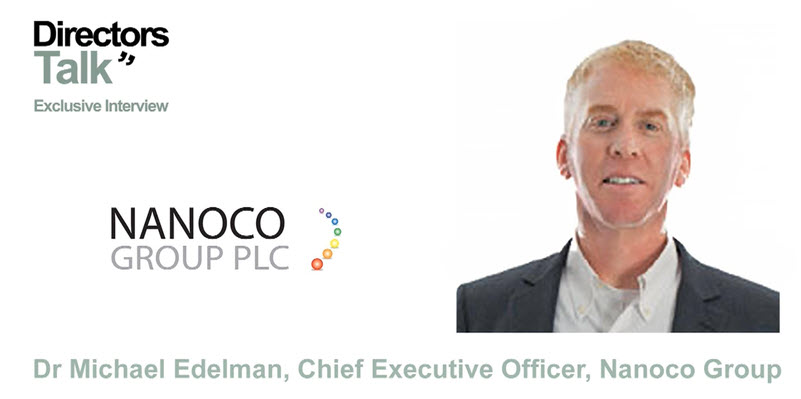Often, patent disputes take place quietly in the background, no longer in ‘smoke-filled rooms’ but in meetings between experts and attorneys. And more attorneys. Eventually, they may get to court and get debated, but they rarely make it to video! So I was grateful when a reader sent me a link to a video article about a dispute between a small technology company and an electronics giant.

The small company is Nanoco of the UK, which has been developing cadmium-free quantum dots (QDs) in Manchester, and the electronics giant is Samsung. Samsung, of course, is no stranger to patent disputes and had what was described as a ‘patent war’ with Apple over smartphone designs from 2011 to 2018. In that case, Apple claimed Samsung had stolen its designs. In this case, the dispute is about quantum dot materials and processing.
(Regular readers can skip this quick backgrounder… Blue light can be difficult to generate in electronic displays (it was a challenge for CRTs, LEDs, PDPs and remains a challenge for OLEDs). However, once you have a good source of blue, QDs are a good way of converting the blue light to really pure green and red light. Using a single colour source and converting is a much more controllable way of producing white light than using separate architectures for the different colour devices. So, they are key materials for LCDs, for Samsung’s QD-OLED architecture, for microLEDs and miniLEDs and for, in the future, emissive QDs.)
Nanoco has been working on QDs for a long time. I have reported on them around 115 times since 2009, when we reported in Display Monitor that the firm had signed a development agreement with ‘a Japanese electronics company’, the second such deal it had agreed.
There have been plenty of companies developing QDs, but Nanoco had a particular angle. Most QDs used cadmium to achieve the properties that were desired, but Nanoco was focusing on cadmium-free QDs. Typically, cadmium-free QDs are significantly less efficient in colour conversion. Although the amount of cadmium is tiny in the very thin layers typically used for QD application, the presence of cadmium meant an exemption was needed for RoHS compliance, and there were plenty of arguments about the topic. However, Apple and Samsung simply said that they would not use cadmium, regardless of RoHS.
Looking for Confirmation
I’m not a chemist, so it has always been tricky for me to decide if companies have really good technology. I usually look for confirming actions from companies that do have a high level of expertise. In the case of Nanoco, the most interesting endorsement was by Dow Chemical, which decided to build a plant in Asia to make QDs using Nanoco ip. The company also had Osram as a client for lighting.
The plant in Asia was developed in Korea with production to start in 2015. Samsung showed QD TVs at CES in 2015, with the source reported by the Korea Times as Dow. LG was also reported to be working with Nanoco & Dow.
Although its first products included cadmium, Nanoco’s main competitor, Nanosys, had been working on cadmium-free alternatives and shipped its first cadmium-free dots in 2017. Nanosys was starting to dominate the market with materials based on its ip being used by Samsung, the largest user of QDs in TVs.

By early 2020, Nanaco was in some financial difficulties and was looking to sell the company. Unfortunately, firm offers did not come through as Covid took hold. Now Michael Edelman, the firm’s CEO has taken the unusual step of publishing an interview highlighting that the company has got third party financial support for a patent action against Samsung. In the interview, he claims that Samsung started making QDs itself using technology copied from Nanoco. I’m not versed in the funding of patent suits, but it seems that there are companies that will back patent claims on a “no win, no fee” basis.
Edelman said that its backer is experienced in disputes with Samsung and that the due diligence for the decision took a year. He also forecast that it may take 24 months or more to come to court (in Texas) although he also said that only one in twenty cases get to trial, with many settled before that stage.
In the interview, he stated his belief that Samsung has sold around 14 million QD-based TVs which sell at a substantial premium to non-QD TVs and that he believes that Samsung has generated revenues of billions of dollars based on Nanoco’s technologies. Nanoco believes it is entitled to a part of that additional revenue.
Now, I’m not a lawyer and especially, not a patent lawyer and I have no knowledge of the detailed claims of this action. You could view this as a ‘David vs Goliath’ struggle for justice or you may see it as a financially-troubled company looking around for a way to raise some cash (I heard both views in discussions with friends about the case). Either way, it’s a salutory lesson about the difficulties of working on ip with industry behemoths. (BR)

